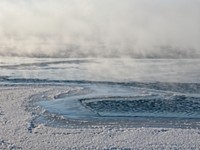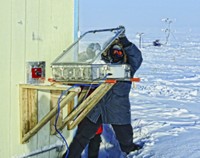Advertisement
Grab your lab coat. Let's get started
Welcome!
Welcome!
Create an account below to get 6 C&EN articles per month, receive newsletters and more - all free.
It seems this is your first time logging in online. Please enter the following information to continue.
As an ACS member you automatically get access to this site. All we need is few more details to create your reading experience.
Not you? Sign in with a different account.
Not you? Sign in with a different account.
ERROR 1
ERROR 1
ERROR 2
ERROR 2
ERROR 2
ERROR 2
ERROR 2
Password and Confirm password must match.
If you have an ACS member number, please enter it here so we can link this account to your membership. (optional)
ERROR 2
ACS values your privacy. By submitting your information, you are gaining access to C&EN and subscribing to our weekly newsletter. We use the information you provide to make your reading experience better, and we will never sell your data to third party members.
Atmospheric Chemistry
First direct measurements of atomic bromine in the atmosphere reported
Observations confirm bromine’s role in ozone depletion and mercury transport
by Katherine Bourzac
June 27, 2019
| A version of this story appeared in
Volume 97, Issue 26

The first direct measurements of atomic bromine in the atmosphere confirm that the trace chemical plays an important role in reactions that result in depletion of low-lying ozone and deposition of toxic mercury on land (Proc. Natl. Acad. Sci. U.S.A. 2019, DOI: 10.1073/pnas.1900613116).
Previous research showed that atomic bromine enters the atmosphere in the Arctic thanks to photochemistry involving the interplay of sunshine, salty sea spray, and reflective snow. But scientists had never directly observed bromine’s subsequent chemistry, University of Michigan atmospheric chemist Kerri Pratt says.
Pratt’s lab had to adapt existing detection technology to trace very small concentrations of the short-lived atom, then get the equipment to a remote area outside Utqiaġvik, Alaska. “Think about putting a chemical ionization mass spec on an airplane, then transporting it over the tundra on the back of a sled in the snow, then getting it to work the best it can at its detection limit,” Pratt says.
During spring of 2012, Pratt’s group found atomic bromine levels as high as 14 parts per trillion in the Arctic atmosphere. Previously, researchers used proxies such as satellite observations of BrO to estimate atomic Br levels. The actual Br levels were 3 to 10 times as great as these estimates. There’s no substitute for the direct measurement, Pratt says. These measurements, she says, also confirm that atmospheric Br plays an important role in depleting ozone and oxidizing mercury. Whether and how climate change will shift this chemistry is an open question, she says.
CORRECTION
This story was updated on June 28, 2019, to correct the image caption to indicate that the scientists detected atomic bromine, not boron.





Join the conversation
Contact the reporter
Submit a Letter to the Editor for publication
Engage with us on Twitter